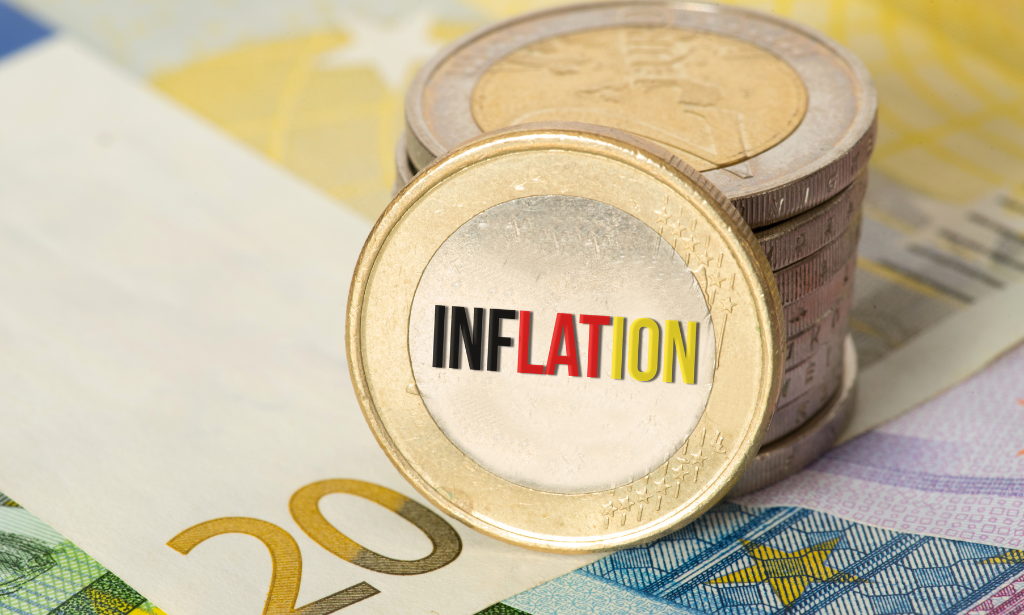January’s preliminary eurozone inflation overshot expectations by 0.1pp, with headline CPI figures showing price growth of 2.8% on an annual basis. Core inflation too delivered a 0.1pp beat to consensus, landing at 3.3% YoY.
But with both readings still down on December’s 2.9% and 3.4% prints respectively, we think the ECB remains on track to downgrade their inflation forecasts in March, a move that will set the stage for an April cut. Although the fact that services inflation has been stuck at 4% now for three consecutive months offers a counterargument to this view, we think this data point overestimates the strength of underlying services inflation. The more timely 3-month moving average rate of inflation has been in disinflation territory now for four consecutive months, and this trend should persist given the latest PMIs continue to show weak growth while the labour market is also seen cooling. Furthermore, the pace of services disinflation would have been larger this month if it wasn’t for readjustment in restaurant VAT in Germany.
Nevertheless, with the headline measure yet to reflect the underlying weakness, we think ECB officials will remain non-committal on the timing of rate cuts, stressing a data dependent stance in light of this uncertainty. This is the main reason why we don’t expect the central bank to lower rates in March, even as its assessment of growth and inflation is downgraded.
Admittedly, there was more uncertainty heading into today’s publication. A hike to VAT in Germany and updated basket weights both served to muddy the waters in advance, meaning that a miss to expectations is less of a surprise than usual. Even so, today’s data largely confirmed the messaging from President Lagarde at the ECB meeting last week. Broad disinflation continues to play out across the consumption basket. Indeed on a MoM basis, prices were estimated to fall outright in January by -0.4%, a significant drop from December’s 0.2% reading. Energy prices continue to be the biggest downwards contributor to annual figures, falling by 6.3% YoY, with base effects depressing annual headline readings. Food alcohol and tobacco similarly continue to play outsized roles, though in the opposite direction, rising by 5.7% YoY. That said, this is still well down on the 14.1% price growth recorded in January 2023, with the measure continuing to move in the right direction for the ECB.
Stripping out volatile components, price growth was 3.3% YoY. But notably, prices fell on a single month basis by -0.9% in January. On a seasonally adjusted 3mma annualised basis core inflation is now tracking substantially in disinflationary territory at -4% having printed flat the previous two months. The key area of note flagged by President Lagarde last week though was services inflation, and this continues to be the one area of the consumption basket where disinflation progress appears to have stalled on the surface. Despite prices falling by 0.1% MoM, inflation in services delivered another reading of 4% in January, the third such print in a row.
Given the emphasis placed on this measure by Lagarde in her communications, and only one more inflation reading due before the March meeting, this now likely rules out a Q1 rate cut from the ECB in our view. Even so, we are confident that disinflation on this measure will pick up over coming months given evidence that the labour market is softening and the likely reduction in corporate pricing power due to weaker levels of consumer demand.
This fact should be recognised by the ECB next month, with significant downgrades to the Bank’s near-term inflation projections. While the December forecasts saw Q1 2024 inflation at 2.9% YoY, and core at 3.1%, we think that the data is now on track to undershoot both measures by some margin. Firstly, the headline measure is already tracking below the ECB’s forecasts and limited signs of energy inflation alongside favourable base effects (+0.8% in February and +0.9% in March) should lead to sustained disinflation in the annual measure. Second, as mentioned, weak levels of growth, specifically in consumer demand, should sustain the current rate of underlying disinflation, especially within services. Similar to the headline measure, favourable base effects in the services aggregate from 2023 (+0.8% in February and +1.3% in March) should also promote significant disinflation in overall core.
All told, we think the view that the slower pace of disinflation will lead the ECB to remain on hold beyond April’s meeting is an overly simplistic read on the data. As this becomes clear and growth data continues to print weak throughout Q1, we expect markets to become more confident in the view that the ECB will need to cut rates early and aggressively to avoid a sinister recession. Against a backdrop of stronger US data and a more cautious Fed, this should promote further EURUSD depreciation.
Authors:
Simon Harvey, Head of FX Analysis
Nick Rees, FX Market Analyst
 Login
Login
